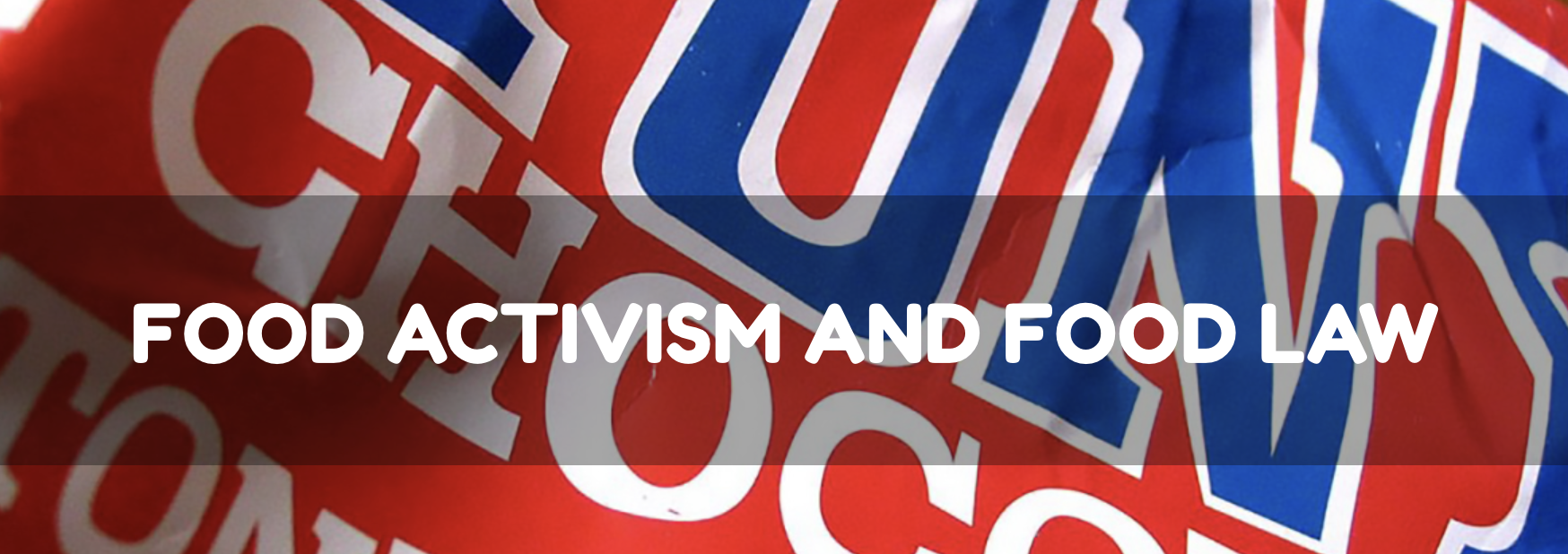FOOD ACTIVISM AND FOOD LAW

Introduction:
The average meal travels 1,500 km from the farm to the supermarket. The Food Justice Movement seeks to ensure that the benefits and risks of where and how food is grown, produced, transported, distributed, obtained and eaten are more fairly shared. By reducing the injustices in the global food system, this movement also contributes positively to issues of the environment, land use, health, immigration, labor rights, economic and community development, cultural integrity, and social justice and fairness.
Roadmap:
Class Talk
Ask one of the students to be the note taker for this activity. The note taker writes down students’ responses to the question, “What can people do to be better informed about what’s in their food?
Engage the class in a conversation about the following questions:
- Take a stalk of broccoli (or other vegetable) and a bag of chips and note the price of both. Show students both products and ask which costs the most, has the most ingredients, and is the most processed? How can that be? Make a connection with the concept of grants.
- People get the impression that food is either cheap or healthy. Is that correct or is this a false dichotomy?
- Students create a daily menu for four that costs as little as possible, but contains plenty of whole grains, fruits and vegetables. Subgroups explore what such a menu costs if you buy all the ingredients from a particular place, such as supermarket, farmer’s market, discount point, wholesaler, etc.
- Research seed banks or other organizations that save seeds. For each organization, discover the goals of their seed saving efforts, who they work with, and how they save seeds. Students create a seed bank at school.
- Where do most students get their food? What is growing in the neighborhood?
- Are there community gardens and farmers markets near school? How did they get started?
- What are CSAs? Is there CSAs in the region? How long has it been there?
Mini Hunger Banquet
At lunch, organize a mini hunger banquet. Hand out lottery tickets. Most of the group gets rice only, a few rice and nuts, and one lucky person gets a fancy sandwich and strawberries. This symbolizes the wealth distribution around the world: rice eaters have low incomes, rice and nut eaters have middle incomes, and the sandwicheter has a high income. Students can share their experiences and their knowledge of global food issues during the handout. Have them also tell about their own history around food and that of their families. Who knows, some may have known hunger.
Target:
Raise awareness around the major food issues and hunger in the world.
Learning outcomes:
Devise fairer and more equitable ways in which food is grown, distributed and consumed.
Necessities:
Flip over and markers.
Food for the Mini Hunger Banquet
Evaluation:
What foods do you want to eat at school? How do we organize that? And why do we choose to do this? What do you want the auditorium (dining hall) to look like, who will provide the food, who will do the preparation and dispensing at school? What is the link between what we eat and what we can grow here? What other services – besides producing food – does a food garden offer?


0 comments
Leave a comment
Please log in or register to post a comment